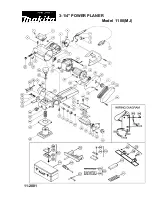
24
25
Chapter 7
CD and MP3 CD playback
Chapter 7
CD and MP3 CD playback
Repeat
› This device supports two repeat mode options.
› Press the REPEAT button once to repeat the current track continually (REPEAT 1).
› Press the REPEAT button a second time to repeat the entire CD continuously (REPEAT ALL).
› Press the REPEAT button a third time to cancel this function and resume normal playback.
Random
› This function allows you to play songs in a random playback order. Press the RANDOM button on
the device or remote control to activate this function. Press this button once again to deactivate.
Information on CDs and DVDs
Handling CDs and DVDs
Do not touch the playback side of discs. Hold by the edges without
touching the recording surface, so that fi nger prints do not come in
contact with discs. Never stick paper or use tape on discs.
Storing CDs and DVDs
After you are fi nished playing a CD/DVD, please replace and store it in its respective cover. Never
expose discs to direct sunlight, sources of heat or high temperatures. Never leave discs in a car
exposed to direct sunlight.
Cleaning CDs and DVDs
Finger prints and dust found on a CD may be the reason for poor picture or sound quality. Be-
fore playing a CD, carefully wipe off fi nger prints and dust with a clean cloth. Please clean in an
inwards to outwards motion.
Never use any solvents or chemicals, such as alcohol, benzine, thinners, any commercially availa-
ble cleaners or antistatic sprays for records to clean discs
MP3/WMA music format information
Music, that we listen to either from a stereo system, kitchen or car radio, is just actually an ana-
log signal. In the past one could buy records, music cassettes and tapes with a recorded analog
signal. While records were usually damaged from dust and frequent use, tapes demagnetized
themselves leading to a dull and muffl
ed sound. Later on, the Compact Disc was developed
for storing music in digital form. An analog signal is measured at specifi c intervals, transferred
in numerical value and stored in a specifi c form on the CD. A CD player (or amplifi er) evaluates
the computed value once again into an analog signal. An audio CD can hold approximately
70 – 80 minutes of music. Its format is similar to that of a normal computer CD-ROM, which has
an equivalent data volume of approx. 650 – 700 MB. The early stages of computer technology
development, where 1 MB user memory, 100 MB hard drives and a 28 kBit modem, a standard
thing were, usually also brought a lot of problems along with it. That’s why researchers started
experimenting with new ways of compressing an audio CDs amount of data.
By various compression programs on computers, such as for instance WINZIP, all initial informati-
on will be irretrievably lost when audio compressing. Normally the diff erence between MP3 and
audio CD playback can not be heard; provided that a „better” compression level is used. In this
case, the playback quality off ered in mobile devices or in cars is satisfactory. The most common
known compressed fi le format is „MP3”, which off ers a variety of quality levels (The principle
is: the better the format, the greater the amount of data).Later on, other diff erent compressed
audio fi le formats were developed; the second most important after „MP3” is the „WMA” format.
Meanwhile, there are both free of charge and/or very expensive programs for almost all ope-
rating systems available on the market that can be used with any available audio CD (or other
source), to help you create compressed music fi les.
Please note:
A lot of audio CDs are copy protected to prevent cloning. In some cases, complications could
arise when converting into a compressed music data fi le. Hi-fi CD players will normally not be
aff ected by copy protected CDs; a lot of computer drives will although refuse playback.



































